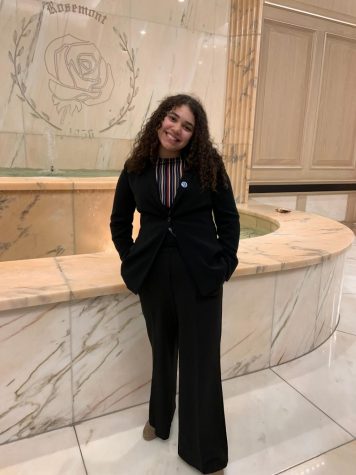Evanston’s desegregation fail

March 22, 2019
Growing up in a school with very few people of color was normal for me. Evanston’s fifth
ward is split up amongst five different schools, with its children bused to school every morning. The schools fifth ward students attend are Kingsley, Lincolnwood, Orrington and Willard. The demographic breakdown at all of these schools is around 50% white and 50% POC, according to the Illinois Report Card. Although this breakdown may seem like it is well diversified and the attempt of desegregation is successful; as a student from the fifth ward, this does not show the school for how it really is.
Even though the schools have such a diverse demographic breakdown, inside of the schools, it is likely that you will see segregated friend groups. At Orrington Elementary School specifically, when there was not enough room at the table, or you got in trouble, you would sit at the back table. Most of my close friends from school were other people who grew up in the fifth ward, because they were around the neighborhood and easier to hang out with, so we would all stay at the back of the line, so we could be seated together. Not only was there so few of us, but we didn’t often mingle with other people.
Hanging out with people after school is a social aspect in a child’s life. Students coming from the fifth ward were expected to line up for the bus immediately after school and are unable to play after school. It is already hard enough for us to relate with the students we go to school with because of the few people living nearby, but going home while the kids around you are socializing is very upsetting to see, especially as a kid.
Since Evanston has students bussed to school, we would be bussed with other students from the fifth ward back and forth. Us students who took the bus to school were required to meet after school and get on the bus. The bus also ends up having most of the fifth ward students on one bus. Not only does this have an impact on us because they are not able to play with the other students after school, but it ends up reversing the effects of diversifying the school because students will be on the bus with other students from the fifth ward and they will have a stronger relationship with these students because they spend more time with those peers.
Evanston’s attempt at desegregating schools worked on the outside, but on the inside of the schools not much progress has been made. School tables are segregated, friend groups are segregated, and this has a great impact on the attempt of desegregation. The demand for progress, like a new school, in the fifth ward is not urgent — but we need to be aware that this is happening to students in Evanston and the predominant target of these developing desegregation attempts, have been and still are, students of color.










Lonnie wilson • Apr 3, 2019 at 4:10 pm
A truly impactful article our young minds are the leaders we need